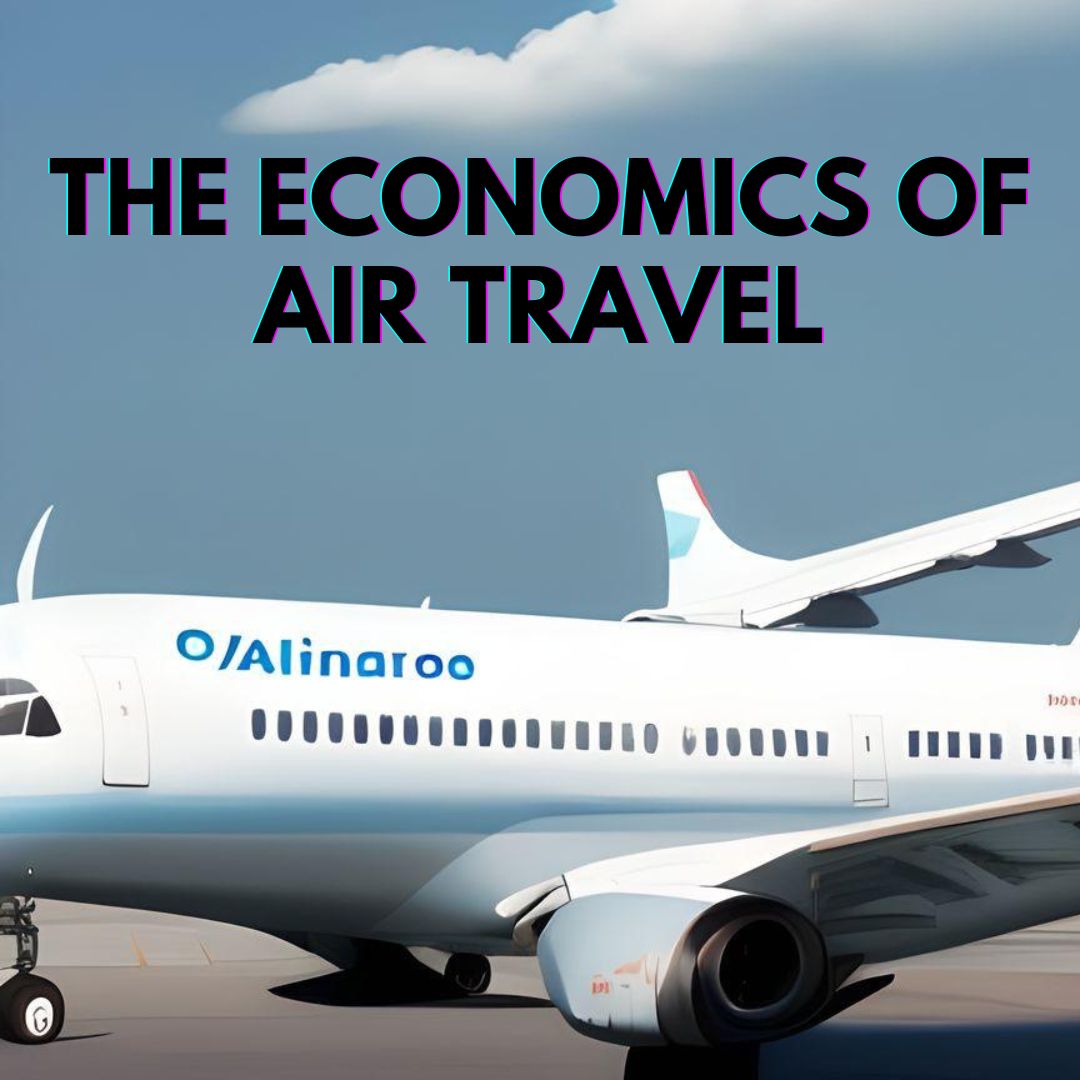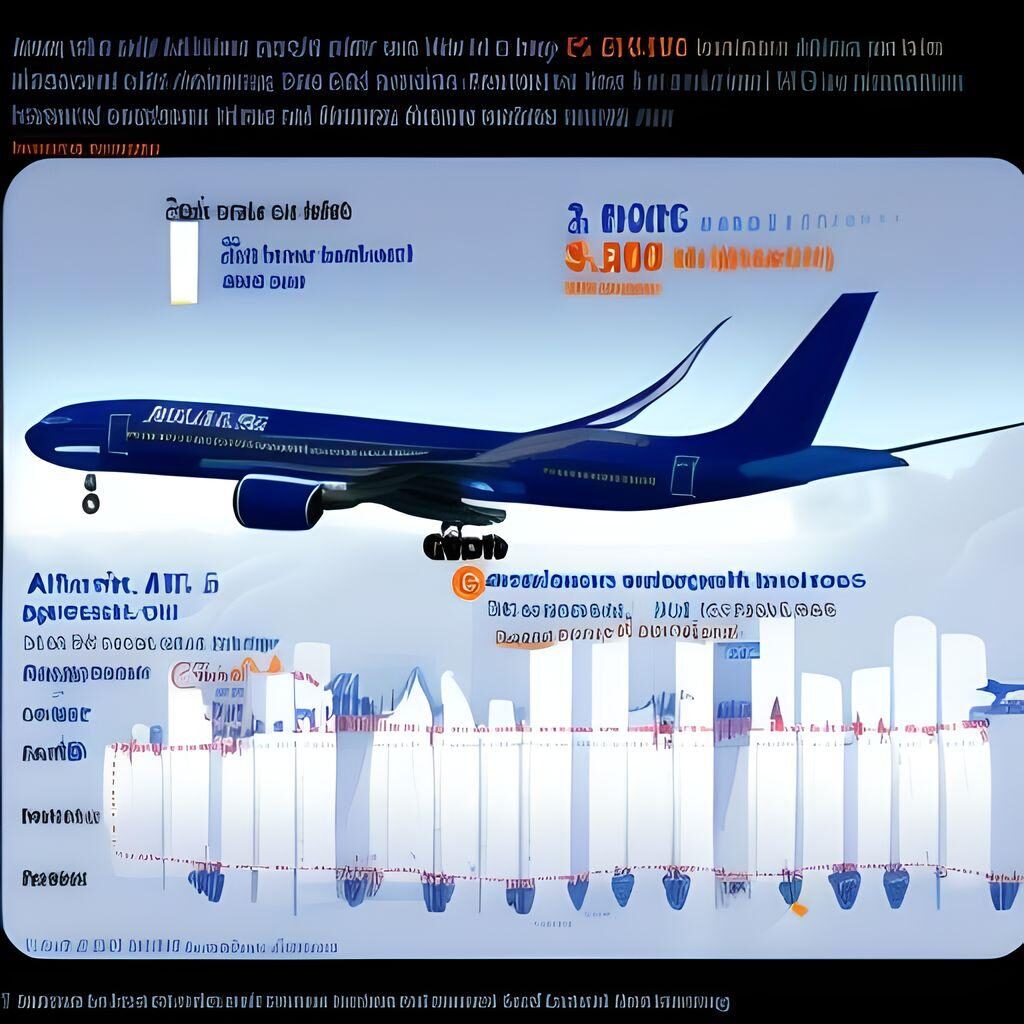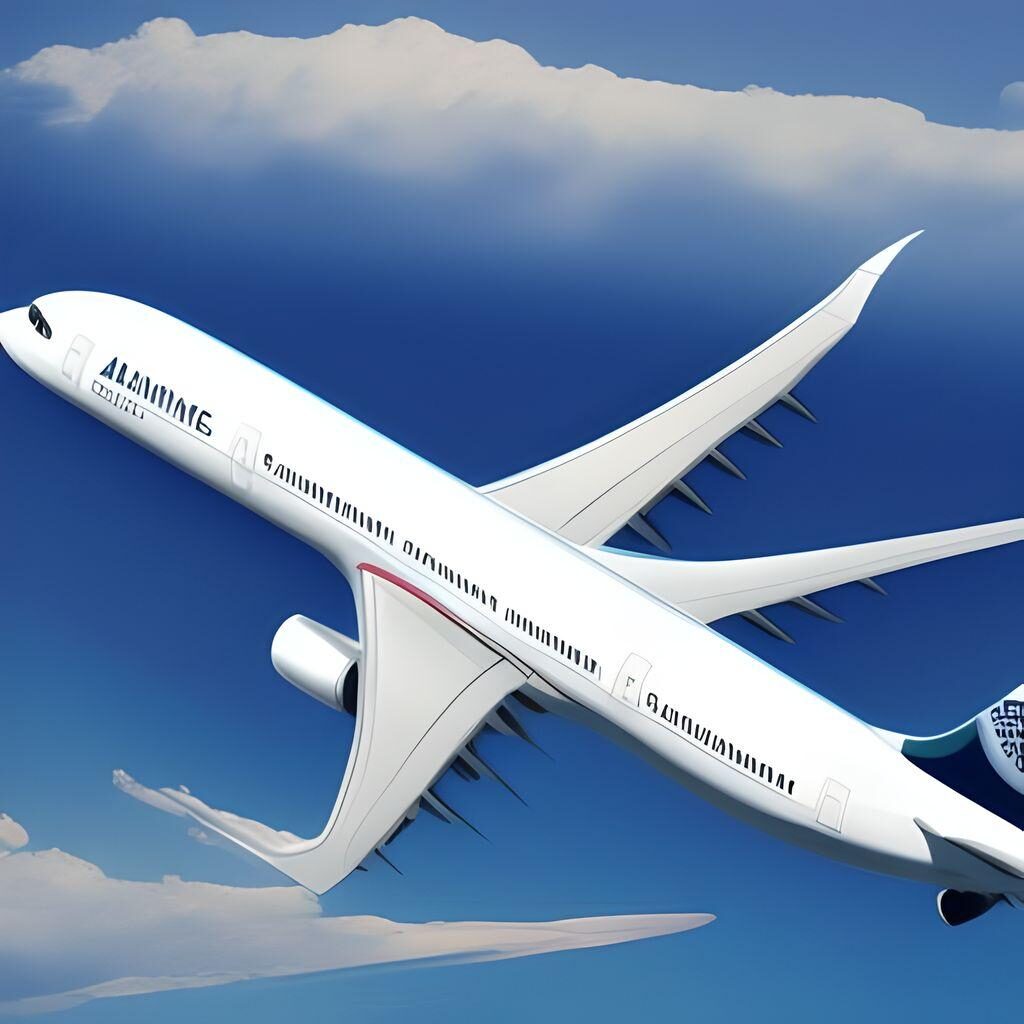The Economics of Air Travel: Navigating the Skies and the Bottom Line
- 7 September 2023 | 560 Views | By Mint2Save

Airplanes are marvels of modern engineering that have revolutionized the way we connect with the world. Beyond their technological prowess, these flying machines are the backbone of a vast and complex industry that spans the globe. Air travel is not only about the convenience of reaching distant destinations but also a complex web of economic factors that shape everything from ticket prices to the profitability of airlines. In this article, we will explore the intricate economics of air travel, examining the key drivers behind ticket costs, the challenges airlines face, and the strategies they employ to stay aloft in a highly competitive industry.
The Cost of Soaring: Key Components of Airline Economics
- Fixed Costs: At the heart of an airline’s cost structure are the fixed costs, which do not change with the number of passengers or flights. These include expenses like aircraft acquisition, maintenance facilities, and employee salaries. Acquiring and maintaining a fleet of modern, fuel-efficient planes is one of the most substantial fixed costs for airlines.
- Variable Costs: Variable costs are directly tied to the operation of flights. They include expenses such as fuel, crew salaries, landing fees, and maintenance for each flight. Fuel, in particular, is a significant variable cost and is subject to market volatility, impacting airline economics greatly.
- Labor Costs: Airlines are labor-intensive businesses. Pilots, flight attendants, ground crews, and administrative staff all contribute to labor costs. Negotiating labor agreements and maintaining a skilled workforce while managing labor costs is a constant challenge for airlines.
- Fuel Costs: Jet fuel is a substantial variable cost and is subject to market fluctuations. Airlines often engage in complex financial hedging strategies to mitigate the impact of fuel price volatility.
- Maintenance and Depreciation: Regular maintenance is critical for aircraft safety and performance. Airlines must budget for ongoing maintenance and also account for the depreciation of their aircraft over time.
- Overhead and Administrative Costs: These include expenses related to office space, marketing, distribution, and other administrative functions. Airlines also need to invest in reservation systems, websites, and ticketing infrastructure.
Ticket Pricing: Balancing Supply and Demand
Setting ticket prices is a complex dance that involves a careful balancing act between supply and demand dynamics. Airlines aim to maximize revenue while filling as many seats as possible. Here’s how they approach ticket pricing:
- Basic Supply and Demand: Like any industry, airlines follow the basic principles of supply and demand. Prices tend to be higher during peak travel seasons, holidays, and on routes with limited competition. Conversely, airlines often offer lower fares during off-peak times or on less popular routes.
- Price Discrimination: Airlines employ a pricing strategy known as price discrimination. This involves segmenting passengers into various fare classes based on factors like flexibility, booking lead time, and the level of service. Business travelers, for example, often pay higher fares because they tend to book closer to the departure date and require more flexibility.
- Dynamic Pricing: Airlines use sophisticated revenue management systems to adjust ticket prices in real-time. These systems consider factors like historical demand on a route, booking patterns, and even weather conditions that may affect travel plans. This dynamic pricing allows airlines to optimize revenue on each flight.
- Ancillary Revenue: Airlines have increasingly turned to ancillary revenue streams to boost their bottom line. These include fees for services like checked baggage, priority boarding, and in-flight amenities. Passengers can often choose to pay for the services they value most, allowing airlines to keep base fares competitive.
- Frequent Flyer Programs: Loyalty programs like frequent flyer miles play a significant role in airline economics. These programs incentivize repeat business and can drive customer loyalty, ultimately benefiting the airline’s revenue.
Market Competition: The Competitive Landscape of Airlines
The airline industry is highly competitive, with numerous carriers vying for passengers’ business. The level of competition can vary significantly depending on the region and the specific routes. Here are some key factors related to airline competition:
- Hub-and-Spoke Networks: Many airlines operate hub-and-spoke networks, with major airports (hubs) serving as central connection points. This strategy allows airlines to consolidate passengers from various origin cities onto a single flight, optimizing capacity and efficiency.
- Low-Cost Carriers (LCCs): The emergence of low-cost carriers, known for their no-frills, budget-friendly approach, has disrupted the airline industry. LCCs often compete aggressively on price and have forced traditional carriers to adapt their strategies.
- Global Alliances: Airlines form global alliances to expand their reach and provide passengers with access to a broader network of destinations. These alliances, such as the Star Alliance and Oneworld, allow airlines to cooperate on routes and share resources.
- Government Regulations: Government policies and regulations can significantly impact competition in the airline industry. Some countries protect their domestic carriers through regulatory measures, while others have open skies agreements that promote competition.
Challenges in the Air: The Perennial Issues Airlines Face
Running an airline is far from smooth sailing, and carriers face several ongoing challenges that affect their economic health:
- Fuel Price Volatility: Jet fuel prices are notoriously volatile and can swing dramatically due to geopolitical events, weather disruptions, and market dynamics. Airlines often engage in fuel hedging to mitigate these risks. Global Crude Oil Fiasco: Reason of Fall | Facts | Conclusion
- Labor Relations: Managing labor relations is a perennial challenge for airlines. Strikes, labor disputes, and contract negotiations can disrupt operations and impact profitability.
- Environmental Pressures: Airlines are under increasing pressure to address their environmental impact. The industry is investing in more fuel-efficient aircraft and exploring sustainable aviation fuels to reduce its carbon footprint.
- Security Concerns: Ensuring the safety and security of passengers is paramount. Airlines must invest in robust security measures, and security incidents or threats can have a significant economic impact.
- Regulatory Compliance: Airlines must comply with a complex web of regulations related to safety, security, and passenger rights. Staying in compliance while managing costs is an ongoing challenge.
Survival Strategies: How Airlines Stay Aloft
Despite the many challenges, airlines have developed strategies to thrive in the competitive aviation industry:
- Fleet Modernization: Investing in modern, fuel-efficient aircraft is a key strategy. Newer planes consume less fuel and require less maintenance, helping to control costs.
- Network Optimization: Airlines continually evaluate their route networks and adjust them to match demand. This involves opening and closing routes as market conditions change.
- Cost Control: Airlines focus on controlling costs across the board, from labor and maintenance to overhead and distribution. Efficiency and cost-saving initiatives are ongoing efforts.
- Customer Experience: Providing an exceptional passenger experience can be a competitive advantage. Airlines invest in cabin upgrades, in-flight entertainment, and customer service training to attract and retain customers.
- Alliances and Partnerships: Forming alliances and partnerships with other airlines can expand a carrier’s reach and reduce operating costs through shared resources and code-sharing agreements.
Conclusion: Flying High in the World of Airline Economics
The economics of air travel are a dynamic and complex web of factors, from the cost of operating an airline to the intricacies of pricing tickets in a competitive marketplace. Airlines must continually adapt to changing market conditions, navigate regulatory challenges, and invest in modernization to stay competitive and profitable.
As passengers, we experience the end result of these economic forces when we book











